Idea by
Anna Klimczak
Call for ideas 2021
Planetary Patterns
Planetary Patterns
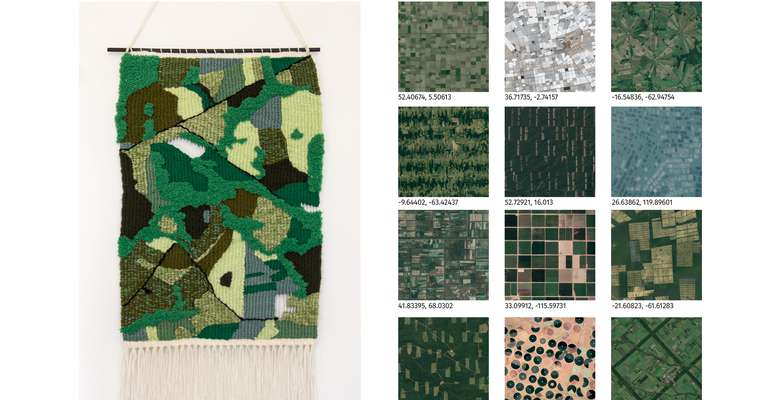
- Systemic changes
The goal of this project is to bring attention to the changes in the land cover by engaging with satellite imagery and using the personal, slow and involved process of weaving tapestries. Using the weaving process, as a therapeutic activity, handling the understanding of the impact of the human race on the planet, becoming less difficult, less “dark-depressive” (Morton, 2016). And there is a lot to worry about. According to the IPBES report from 2019: less than 25% of the Earth’s land surface has escaped substantial impacts of human activity – and by 2050, this will have fallen to less than 10%. This fast and highly mechanized process of land subjugation became clearly visible on satellites, creating aesthetically pleasing geometric patterns. By presenting a long weaving process, a metaphor of gentle landscape transformation, the project aims to collectively discuss a much-needed change of values in design practices: patience, care and focus, in contrast to technological efficiency.
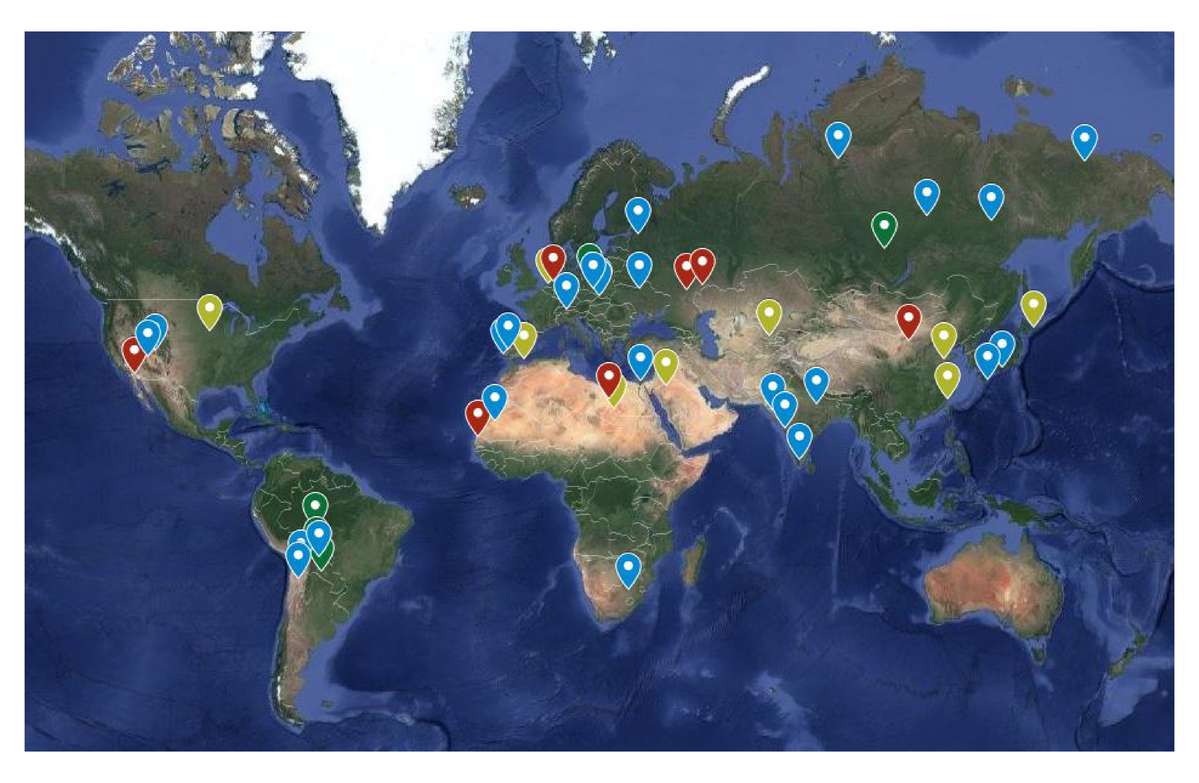
The integral part of individually weaved pieces of the tapestry is the collective catalog of planetary patterns. By collecting pieces of locations, shocking and touching for each of the contributors, we are exchanging knowledge about earth cover, our fascination, fears, knowledge about land management and social organization. Take a look: https://bit.ly/38lqRjk

Locations, collectively found, categorized and described, create a catalog of patterns. Those aesthetically pleasing, geometric textures, at the same time open the catalog of extensive problems we should face and try to find solutions for.
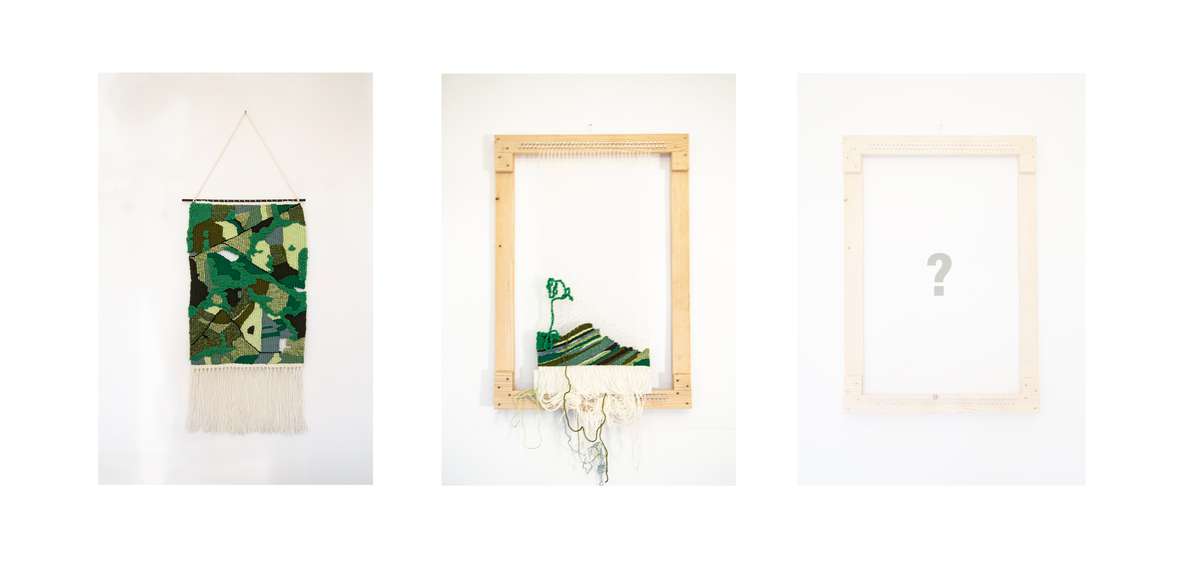
The weaving process, in reverse, is focusing on location without heavy geometrical transformation, builds understanding of long and complicated processes of landscape transformation. The ready piece of tapestry brings questions of the aesthetic value of landscape images and opens the discussion of the qualities we should consider over the abstract, satellite compositions. For the proper ecological adaptation, we should rethink the understanding of nature and overall its values.
Planetary Patterns
Planetary Patterns

- Systemic changes
The goal of this project is to bring attention to the changes in the land cover by engaging with satellite imagery and using the personal, slow and involved process of weaving tapestries. Using the weaving process, as a therapeutic activity, handling the understanding of the impact of the human race on the planet, becoming less difficult, less “dark-depressive” (Morton, 2016). And there is a lot to worry about. According to the IPBES report from 2019: less than 25% of the Earth’s land surface has escaped substantial impacts of human activity – and by 2050, this will have fallen to less than 10%. This fast and highly mechanized process of land subjugation became clearly visible on satellites, creating aesthetically pleasing geometric patterns. By presenting a long weaving process, a metaphor of gentle landscape transformation, the project aims to collectively discuss a much-needed change of values in design practices: patience, care and focus, in contrast to technological efficiency.
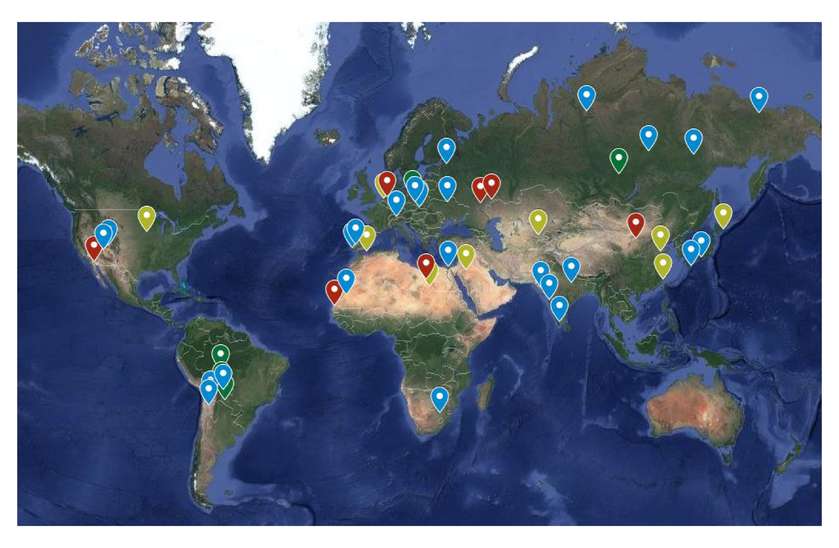
The integral part of individually weaved pieces of the tapestry is the collective catalog of planetary patterns. By collecting pieces of locations, shocking and touching for each of the contributors, we are exchanging knowledge about earth cover, our fascination, fears, knowledge about land management and social organization. Take a look: https://bit.ly/38lqRjk
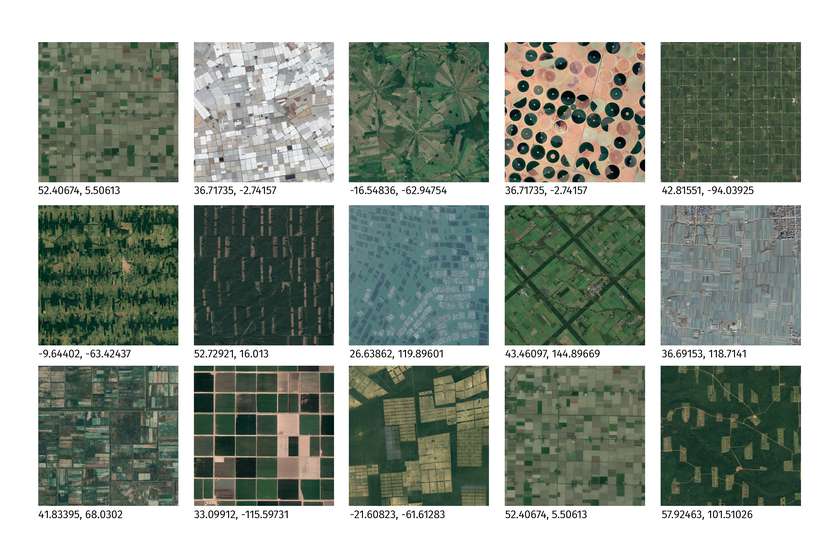
Locations, collectively found, categorized and described, create a catalog of patterns. Those aesthetically pleasing, geometric textures, at the same time open the catalog of extensive problems we should face and try to find solutions for.

The weaving process, in reverse, is focusing on location without heavy geometrical transformation, builds understanding of long and complicated processes of landscape transformation. The ready piece of tapestry brings questions of the aesthetic value of landscape images and opens the discussion of the qualities we should consider over the abstract, satellite compositions. For the proper ecological adaptation, we should rethink the understanding of nature and overall its values.